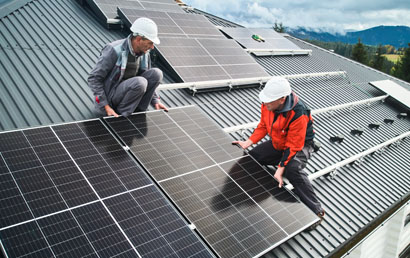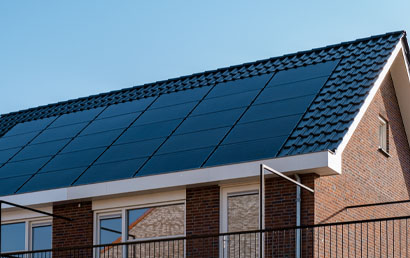Introduction
In an era where environmental consciousness is on the rise, harnessing renewable energy sources has become imperative. Among these sources, solar energy stands out as a clean, sustainable, and cost-effective option for both residential and commercial spaces. If you're considering making the switch to solar power, this comprehensive guide will walk you through the process of going solar, from understanding the basics to making an informed decision.
Understanding the Basics
How Solar Panels Work:
Solar panels convert sunlight into electricity through the photovoltaic effect. Photons from sunlight strike the cells in the solar panels, creating an electric current. This direct current (DC) is then converted into alternating current (AC) by an inverter, making it usable for your home or business.
Types of Solar Systems:
There are two main types of solar systems: grid-tied and off-grid. Grid-tied systems are connected to the local electrical grid, allowing you to sell excess energy back to the grid. Off-grid systems operate independently and are equipped with battery storage for energy during periods of low sunlight.
Assessing Your Energy Needs
Energy Audit:
Before going solar, assess your current energy consumption. Understand your peak energy usage, daily patterns, and the appliances that consume the most energy. This information will help you determine the size of the solar system you need.
Roof Assessment:
Evaluate your roof's suitability for solar installation. Consider factors such as its orientation, tilt, and shading. Ideally, a south-facing roof with minimal shading is optimal for maximizing sunlight exposure.
Financial Considerations
Incentives and Rebates:
Research available incentives and rebates offered by federal, state, and local governments. These incentives can significantly reduce the upfront cost of installing solar panels.
Return on Investment (ROI):
Calculate the potential ROI of your solar investment. With decreasing solar panel costs and rising electricity prices, many homeowners experience a positive ROI within a few years.
Choosing a Solar Provider
Research and Comparisons:
Explore different solar providers in your area. Look for companies with a solid reputation, positive customer reviews, and experience in the industry. Obtain multiple quotes to compare pricing and services.
Warranty and Maintenance:
Check the warranty and maintenance offerings from potential solar providers. A reputable provider will offer a comprehensive warranty on both the panels and the installation work.
Installation Process
Site Survey:
Once you've chosen a solar provider, they will conduct a site survey to assess your property's specific needs. This survey will help determine the optimal placement of solar panels.
Permitting and Approvals:
Obtain the necessary permits and approvals from local authorities before installation. Your solar provider should handle this process, ensuring compliance with regulations.
Environmental Impact
Reducing Your Carbon Footprint:
Going solar significantly reduces your reliance on non-renewable energy sources, contributing to a greener, more sustainable future. Calculate the environmental impact of your solar system to understand its positive effects on reducing carbon emissions.
Educating Others
Share your solar journey with friends and neighbors to promote awareness and encourage others to make the switch to clean energy.
Conclusion
Going solar is a transformative step toward a more sustainable and environmentally friendly lifestyle. By understanding the basics, assessing your energy needs, considering financial aspects, choosing the right provider, and embracing the installation process, you can seamlessly transition to solar power. The benefits extend beyond financial savings, as you actively contribute to a cleaner, greener planet for future generations. Embrace the power of the sun and embark on a journey toward a more sustainable energy future.








